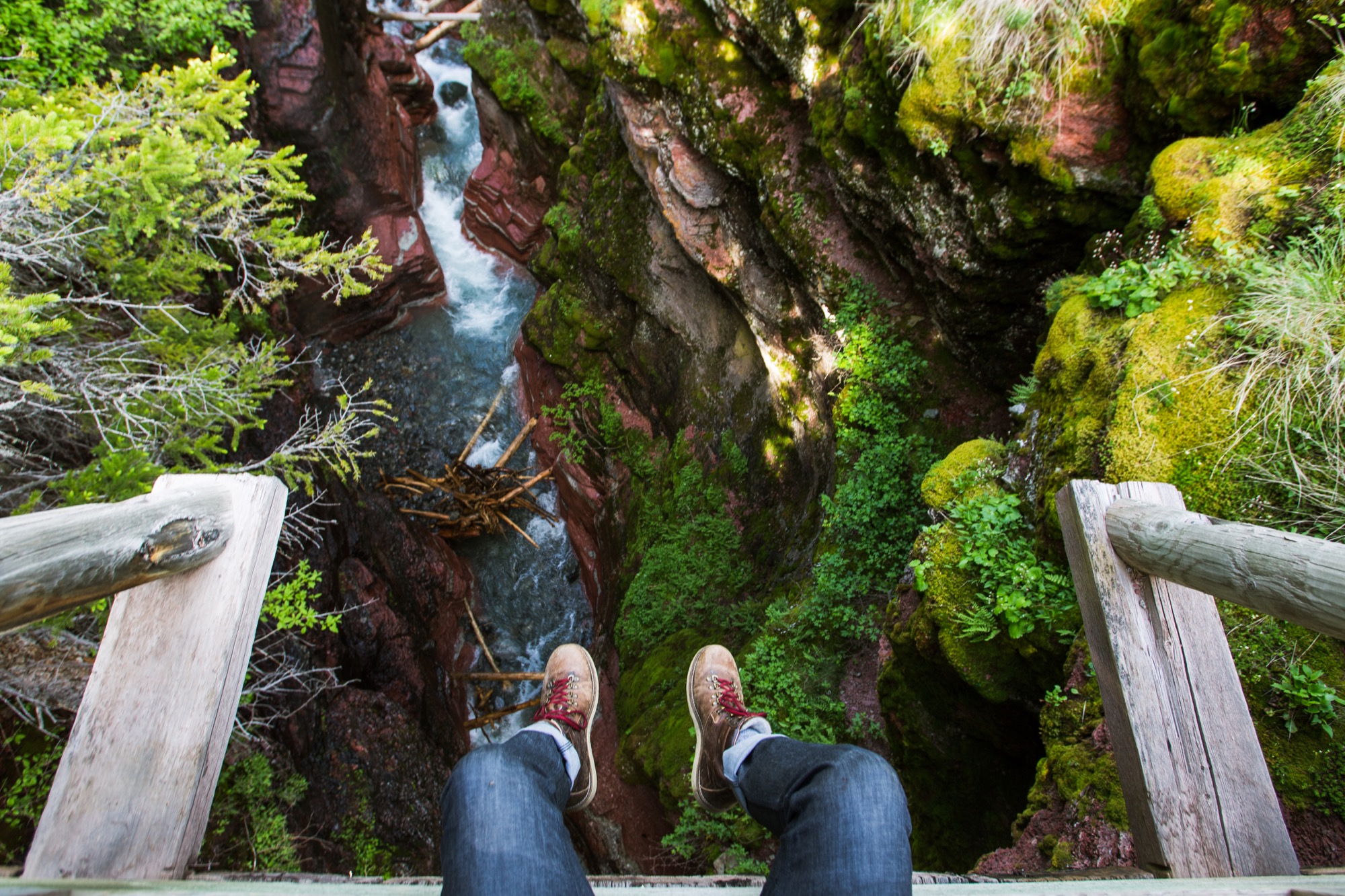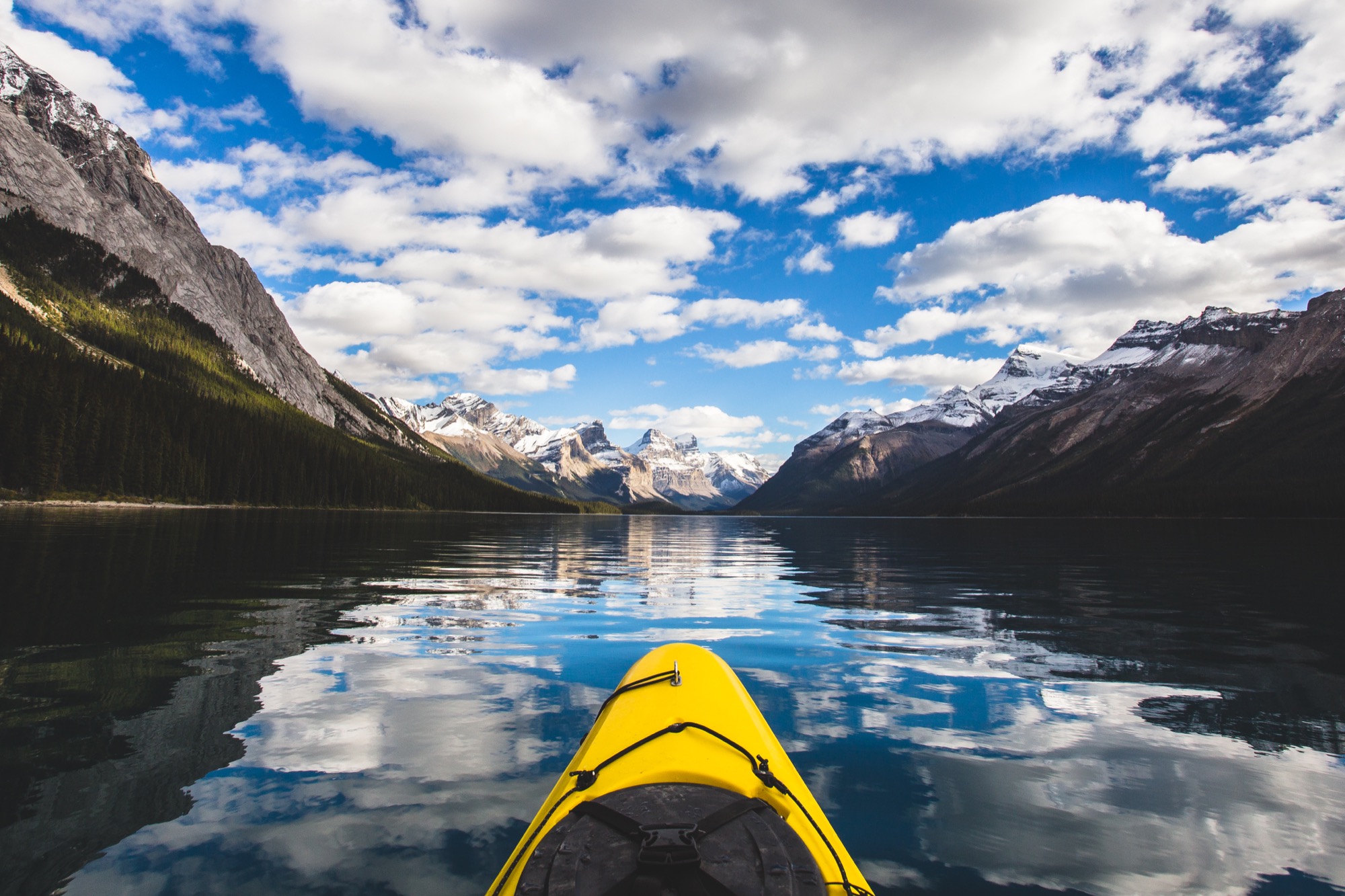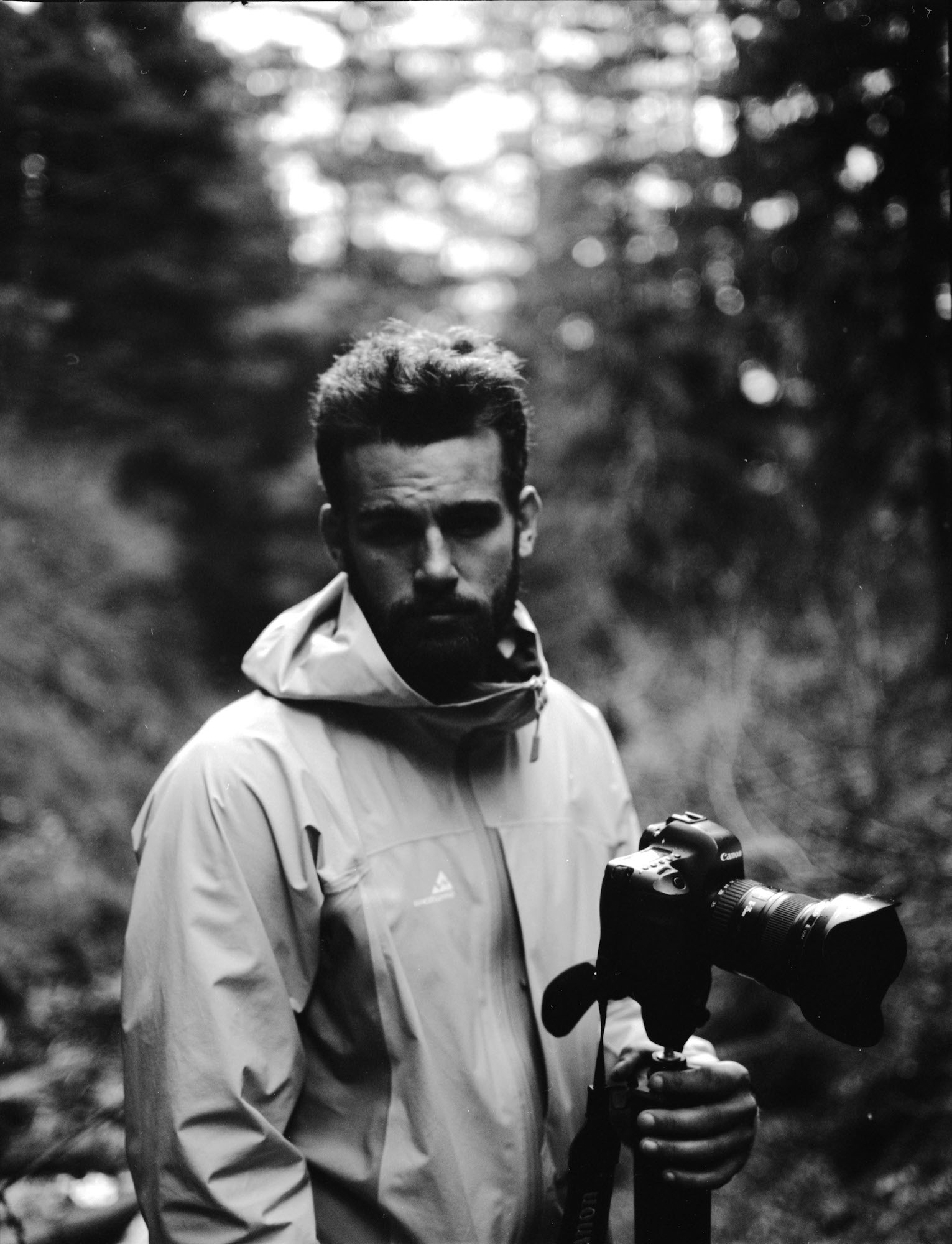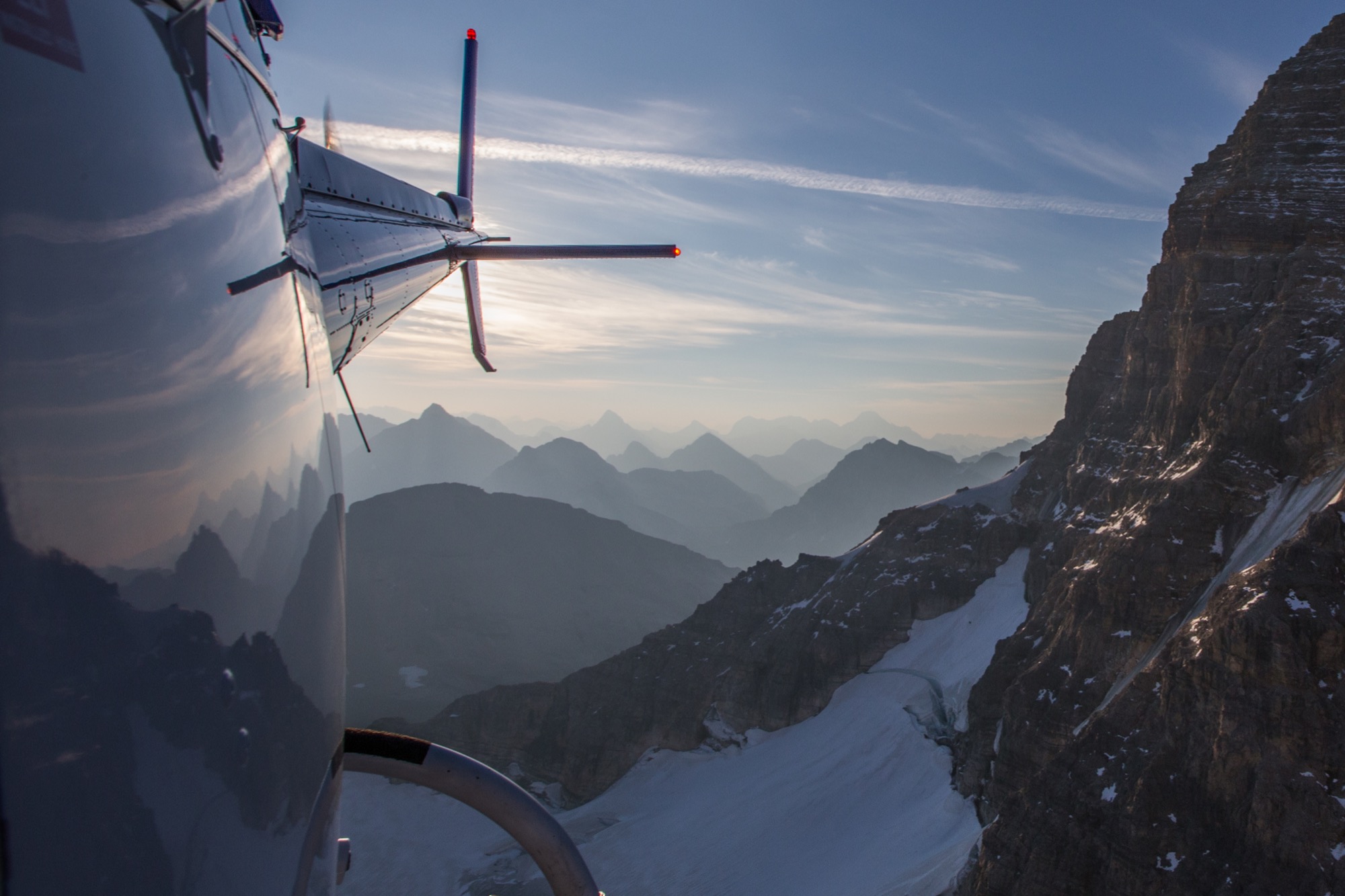
Inspirations
Explore the elevated life in the mountains. This content debuted in 2015 with Alpine Modern’s printed quarterly magazine project.
Taking a Shot
A conversation with photographer Jeff Spackman
Three years ago, Jeff Spackman was on track to become a dentist. Then he bought his first camera and learned how to use it from YouTube videos. Today, @namkcaps has more than 150-thousand followers on Instagram. Bidding dental school farewell, the Canadian now goes on photography trips all over the world.

A M You were on a completely different path when you boldly jumped into photography on a professional level . . .
J S Photography crept up on me. I had never considered it as a career. I had never even known any photographers. My family barely took pictures of birthdays growing up. I’d never taken photography classes. I’d never owned a decent camera. I never saw it coming. I had a terribly difficult time trying to decide what to do professionally. I had wanted to be everything from a plumber to an architect. At some point, though, I decided I was going to be a dentist. Working in peoples’ mouths didn’t seem terrible to me, and it looked rewarding enough. University was difficult, but with the sacrifice of my social life, relationships, and hobbies, I did well academically. Eventually, I graduated in chemistry near the top of my class and began applying to dental schools. In the summers, I had been washing windows to pay for school, so I kept that up after graduation. It was only a matter of time before I got accepted into dental school.
A M And then, what happened? J S While I was in my last year of school, I did something that would turn out to be my first step to becoming a photographer. I bought a used iPhone 4. A couple of months later, a friend told me about an app called “Instagram.” It didn’t seem that interesting to me, but whatever. I downloaded it and followed a few friends.
"I did something that would turn out to be my first step to becoming a photographer. I bought a used iPhone 4."
Turned out, Instagram was the other big step. I have always loved expressing myself artistically. I noticed that having a creative outlet makes me feel like myself. It calms me, helps me think, makes me happy. I downloaded all the free photo editing apps I could get my hands on to my iPhone. I posted all kinds of weird things on Instagram. All those old photos are still up on my account.
My iPhone started to present limitations to what I wanted to capture. I loved shooting in the Rockies here in Alberta, but I wanted wider angles. I wanted sharper images. I wanted to shoot in low light. I wanted more editing ability. In January 2013, I got my first real camera. I learned how to use it from YouTube clips. I became fiercely passionate about my hobby. I took my camera with me everywhere. I played with it at home, while I was hiking up mountains, and when I walked to the corner store.
All this time, my Instagram following had been growing slowly, mostly among locals who love the mountains like I do. Working for myself washing windows also gave me time to do what I loved—climbing mountains, swimming in freezing lakes, and taking pictures along the way. I entered my photos in small contests on Instagram. I also followed professional photographers and adventurers to see what they created. In the summer of 2013, Instagram came across my account and endorsed me as a “suggested user” to follow, twice. I gained around ten thousand new followers a week at that time.
I’ve never before found a passion I connected with like this. Still though, I was going to be a dentist, just now a dentist who really liked taking pictures.

A M You bought your first camera just over three years ago. How did you learn to be so good so quickly?
J S I went on YouTube to learn about all the buttons on my camera. I was thirsty to learn and I spent long hours reading online about lenses and cameras. I studied the pictures of the photographers I followed on Instagram, trying to understand how they did it. I’ve always loved nature, so it felt natural to try to capture in photos the way being outdoors made me feel. It was like I remembered who I had always been.
A M When and how did you know you no longer wanted to become a dentist and, instead, be a professional photographer?
J S I don’t know when the transition from dentistry to photography really happened. Perhaps the biggest jump was when I decided to stop washing windows and put everything into taking pictures. That was two years ago. I knew I couldn’t properly give photography a chance without jumping in with both feet. That was scary. I really had no idea if I’d just run myself into debt in the first couple of years, but I needed to satisfy something I couldn’t describe.
A M Share your emotions when you made this big leap—the fear, the thrill, and everything in between.
J S It has been an emotional rollercoaster and often still is. Making money with photography is not easy. And washing windows was good, steady work. Dentistry ain’t half bad either. My photography career started out incredibly slow. I had never had any training in it. Camera equipment costs a fortune. The whole business side of photography was completely new to me. I had a million reasons to not do it, and people close to me urged me to stick to dentistry. At least, with dentistry I knew exactly what steps to take. I knew timelines, the grades I needed, how much debt it would put me in. With photography, I no longer knew what to do. I would try new things that didn’t work out. Big plans with clients, forged over months, suddenly fell apart. At times, I was terribly discouraged. For a long time, my goal was just to pay off my camera equipment.
At the same time, I was exhilarated. People admired my work and were impressed that I’ve learned so much in only one short year. Those professional photographers I admired on Instagram? They began following my account and praising my work. I even got to go on photography trips with a few of them and ask them how they started, what equipment they use, how they edit, how they find business. And they encouraged me.
A M Any words of wisdom for others considering a bold, career- and life-changing move?
J S I don’t think being bold means making quick or uneducated decisions. Success comes not only from passion, but also from hard work. In the end, no one can answer those questions for us. Hopeful- ly, we are listening intently enough to hear the answer from within, even if it’s a no. And we need to know and trust ourselves when it’s a yes.
A M How has your life changed since taking a shot at photography?
J S I have learned an enormous amount. I’m naturally drawn to learning about photography. Learning about marketing, software, networking, negotiations, and how to write proposals is much more difficult, but just as important. It’s incredibly rewarding to make your weaknesses your strengths.
"It’s incredibly rewarding to make your weaknesses your strengths."
A M What has been your favorite assignment so far?
J S Ever since I downloaded Instagram, I had a favorite photographer, Chris Burkard. I loved his work so much. When he responded to my comment on one of his photos, I took a screenshot of it. As my photography improved, Chris eventually started following me back and we exchanged comments from time to time. He really was an inspiration to me.
One day, the Alberta Tourism Board asked me if I wanted to plan and guide a visit to Alberta for Chris Burkard. My heart skipped a beat. It was so much fun to explore my own province with him. Chris pushed me not only physically but in my ability and goals. We became good friends through the experience.
A M What do you love most about being a photographer?
J S That I get to be creative and spend time in nature. I love both of these things more than I could ever get across in an image. Maybe someday, everything I have done will give a glimpse of how I feel about it. I feel a reverence for natural spaces, and my photography is how I try to let others feel that, too. △
"I feel a reverence for natural spaces, and my photography is how I try to let others feel that, too."

Personal brief
BORN: Calgary, Alberta, Canada, 1985
EDUCATION: I was never officially accepted into dental school. I have a very high GPA and did very well on my DAT tests both in Canada and in the United States. It was just a matter of time . . .
NOW LIVES: Edmonton, Alberta, Canada
FAVORITE PLACE ON EARTH: Waterton Lakes National Park, Alberta, Canada. It’s where I’ve come my whole life. It’s where I first started to take pictures of nature. I plan to go there regularly until the day I die.
WHAT MAKES YOU HAPPY? I love to be active in nature. I love to be with my family. I love to take pictures.
MOST IMPORTANT IN LIFE: Family. Family has the potential to be our greatest source of happiness. It grounds us, teaches us, and reminds us what’s important.
MOTTO: Life is ten percent what happens to me and ninety percent how I react to it.

Ice Wide Open
Photographer Chris Burkard finds joy in near-freezing waters just inside the Arctic Circle
When surf photographer Chris Burkard wearied of shooting at tropical beaches and extravagant tourist destinations, he sought out the world’s most remote, stormiest coasts—and found ultimate gratification in Arctic waves. Chris Burkard wouldn’t blame you if you called him crazy for finding absolute joy in surfing just inside the Arctic Circle.

In his talk at TED2015, the renowned photographer shares a story that finds him in the near-freezing waters of Norway’s Lofoten Islands. Chasing perfect waves in the icy ocean with a group of surfers, he could feel the blood leaving his extremities, rushing to protect his organs. “Pain is a kind of shortcut to mindfulness,” he quotes the social psychologist Brock Bastian. The TED session is fittingly titled “Passion and Consequence.”
“Pain is a kind of shortcut to mindfulness.”
His parents didn’t think “surf photographer” was a real job title when Burkard told them at age nineteen that he was going to quit his job to follow his dream of working (and playing) at the world’s most exotic tropical beaches. The self-taught photographer set off in search of excitement but found only routine. A seemingly glamorous career of shooting in dream tourist destinations soon left him ungratified. Constant Internet connection and crowded ocean waves slowly suffocated his spirit for adventure.
Perfect waves in intoxicatingly unforgiving places
“I began craving wild open spaces,” Burkard tells his TED audience. Once he grasped that only about a third of the Earth’s oceans are warm—a thin band around the equator—he began to look for perfect waves in places that are cold, where the seas are notoriously rough. Places others had written off as too cold, too remote, and too dangerous to surf. Places like Iceland.
"I began craving wild open spaces.”

“I was blown away by the natural beauty of the landscape, but most importantly, I couldn’t believe we were finding perfect waves in such a remote and rugged part of the world,” he says. Massive chunks of ice had piled on the shoreline, creating a barrier between the surf and the surfers. “I felt like I stumbled onto one of the last quiet places, somewhere that I found a clarity and a connection with the world I knew I would never nd on a crowded beach.” The icy ocean his new muse, the artist was again intrigued by his subject.
Cold water always on his mind now, Burkard’s newly invigorated career took him to such intoxicatingly unforgiving environments as the frozen wilderness of Russia, Norway, Alaska, Chile, and the Faroe Islands. He spent weeks on Google Earth trying to pinpoint any remote stretch of beach or reef and then figuring out how to actually get to it.

Hypothermic yet happy
In a tiny, remote fjord in Norway, just inside the Arctic Circle, Burkard and his crew encountered a place where some of the largest, most violent storms on Earth send huge waves smashing into the coastline. He was in near-freezing water taking pictures of the surfers (who knows how he managed to push the camera shutter-release button), and it started to snow. He was determined to stay in the water and finish the job, despite the dropping temperature. He had traveled all this way, after all, and found exactly what he’d been waiting for. Wind gushed through the valley. Steady snowfall escalated into a full-on blizzard. Burkard lost perception of where he was. Was he drifting out to sea or toward the shore? Borderline hypothermic, his companions had to pull him out of the water. They told him later he had a smile on his face the entire time.
From that point on, the photographer knew every image was precious, something he says he now was forced to earn. The anguish out there on the icy water had taught him something: “In life, there are no shortcuts to joy.” △
“In life, there are no shortcuts to joy.”

